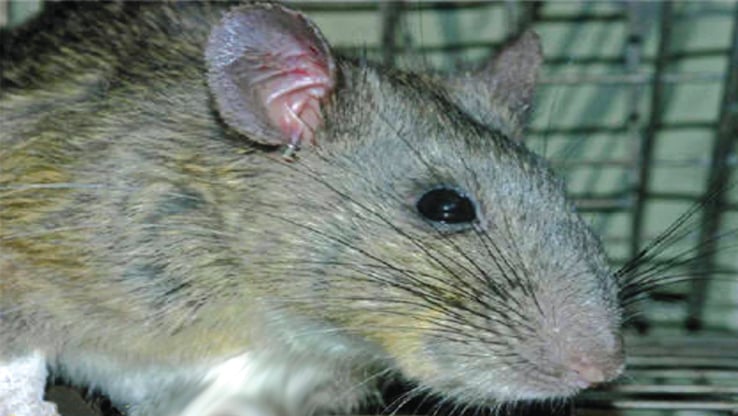Pennsylvania Game Commission joins forces to repopulate Allegheny woodrats in the wild – Outdoor News

Harrisburg — The Pennsylvania Game Commission, the Maryland Zoo and the University of Pennsylvania School of Veterinary Medicine’s Wildlife Futures Program are members of the Allegheny Woodrat Working Group that have teamed up to start a Woodrat Captive Breeding Program to rebuild struggling populations of Allegheny woodrats.
Through the program, a small number of wild animals will form a founding colony at Maryland Zoo. The first such woodrat, a female from Mifflin County, turned out to be pregnant and subsequently gave birth to three pups at the zoo. Ultimately, she will be joined by woodrats from Virginia and Indiana to breed subsequent generations.
The current pups will stay at Maryland Zoo for a few weeks before being transferred to a soft release pen where they’ll grow and become acclimated to the wild before being released on their own.
Because the pups will be released, the woodrat repopulation team is taking a hands-off approach so the animals don’t form human attachments that would limit their chances for success after release. Keepers are primarily monitoring the pups via a nest box camera.
“We previously had Allegheny woodrats and were quite successful at breeding them, so I’m optimistic about having lots of pups to release into the wild,” said Erin Cantwell Grimm, mammal curator at the Maryland Zoo.
MORE COVERAGE FROM OUTDOOR NEWS:
Three bills pass Pennsylvania House panel, but reps focus on issues within PGC
Need a new release for bowhunting? Here’s what to consider
Still no arrests in case of embedded fishhooks found in dog treats planted on Pennsylvania game land
Work is also ongoing to improve habitat at woodrat sites throughout their range in the Appalachian Mountains. At one time, the Allegheny woodrat’s range extended from southwestern Connecticut west to Indiana and south to northern Alabama.
These animals are now listed as Endangered in Indiana, Ohio, Maryland, New Jersey, and New York and are considered a species of conservation concern in Pennsylvania, Virginia, Tennessee, Kentucky, North Carolina, and West Virginia.
[embedded content]
As a result, these states and their university and zoo partners have come together to form the Allegheny Woodrat Working Group to coordinate a range-wide recovery effort and prevent federal listing of the species.
Fragmentation of their forest habitat, the loss of food sources due to invasive species, a highly fatal parasite spread by raccoons, and increased populations of native food competitors like deer, bears and squirrels are among the factors that have caused rangewide declines of woodrat populations, including a 70% decline in Pennsylvania over the past 40 years.
“Woodrat populations have declined so much that they have become isolated from one another,” said Kate Amspacher Otterbein, mammal recovery specialist at the Game Commission. “That leads to low genetic diversity and eventually to inbreeding, which is yet another factor in population decline.”
The goal of the Woodrat Captive Breeding Program is to produce genetically diverse woodrats that can be reintroduced back to the wild to improve genetic diversity of remaining woodrat populations. This is just one piece of the multi-faceted recovery approach that the woodrat working group is developing.






